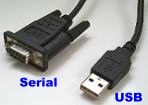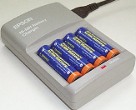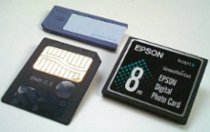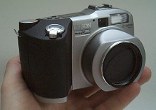| Support | Learning Center | General Imaging Info
How to choose the right digital camera for you
There are many digital cameras on the market today that offer a wide range
of features. Here is a short list of things to think about before buying.
People have different uses for digital cameras, so there is no single
model that is right for everyone. Try to determine the features that are
most important to you.
Definition
The sharpness and size of the pictures taken by a digital camera depends
on the size of the sensor behind the lens. It is usually measured in 'megapixels'
(millions of pixels). For consumer digital cameras, sensor sizes can range
from 0.4 to around 8 mega pixels. The cost of the camera is closely related
to this value, due to the complexity of the lenses and amount of processing
power needed. For photos to look acceptable on screen or on the Web, a
1 mega pixel camera may be fine. Generally, you need at least 2 mega pixels
to make a 4" x 6" print of photo quality. If you frequently
crop images or make big enlargements, you will need more mega pixels.
Don't forget, the larger the sensor, the larger the output files, meaning
that pictures will need more storage space and take longer to display
or send to other people.
Image quality
There is more to image quality than sharpness and mega pixels! Good color
is important to making attractive pictures. Generally speaking RGB sensors
(CCDs) are better than CMYK sensors. Good auto-exposure controls and accurate
white point processing will also improve results. Check magazine and online
reviews of the model that you want to buy.
Picture-taking speed
Film cameras respond almost instantly when you press the shutter release
button. Digital cameras do not. The delay time varies among digital cameras,
ranging from a fraction of a second to over a second in some cases. If
you like to take action shots, this is very important. There is also a
delay between taking one picture and going on to the next, caused by the
camera storing the image on the memory card. Again, the delay can be long
in some cases.
 Connection
to the computer Connection
to the computer
There are two main ways to transfer data to your computer via cable. Serial
cables are slow and best avoided, while USB cables are faster and generally
acceptable if you don't lose the special cable! Check to see what type
of cable the camera supports. Alternatively, you can also take the memory
card out of the camera and put it into a card reader.
Power consumption and batteries
Digital cameras use a lot of power. How much they use varies from model
to model. If you are concerned about battery life, avoid models that do
not have an optical viewfinder (you can then turn off the display monitor
when taking photos). Also, check if the camera has rechargeable batteries,
if it is possible to recharge the batteries in the camera, and if the
camera accepts regular batteries as well. Special batteries and the charger
may or may not be included with the camera.
Lenses
The lens is a critical component of the camera and contributes a lot to
the cost. Digital camera lenses are small and need to be accurately manufactured.
Their specifications vary widely, but there are several factors that affect
lens performance (see the section Understanding
digital camera lenses). The most obvious lens parameter is zoom range.
It is very convenient to be able to take wide angle and telephoto shots
with the same camera. Always check for the optical zoom range, since the
digital zoom range is typically not as useful. 3X optical zoom is good,
but fairly expensive. Try the zoom before you buy the camera to see if
you like the range.
Capacity
Digital cameras depend on memory cards ('digital film') to store pictures
- unlike photographic film they are reused many times. The memory card
is similar to the RAM in your computer, but retains the pictures even
when turned off. Check how many pictures can be stored on the card when
images are taken at normal resolution. For most cameras, the image files
are about 500K each, so an 8MB memory card will store only about 16 pictures,
not enough for a two week vacation! If your camera has a removable memory
card, you can buy more cards. But consider the costs of buying extra memory
cards; higher capacity cards can be expensive.
Other features
Some cameras have cool extra features. For instance, some allow short
videos to be captured (which can be very short and poor in quality). Others
can record sound clips into JPEG files or be operated by remote control
or from your computer.
 Size
and Weight Size
and Weight
Most digital cameras are small, but if you like to take pictures at parties
or prefer to travel light, you may prefer a model you can slip into your
pocket. However, the larger models often have better lenses, more battery
capacity, and are easier to hold steady.
Accessories
Check to see what accessories are included when comparing prices. Some
cameras come with a lot of accessories, others do not. Carrying cases
and cables might also be included. Buying certain accessories can be expensive,
like batteries, battery chargers and memory cards.
Design
Lets face it - you may want to make a fashion statement with your digital
camera. Also see whether or not the controls are easy to operate. If your
kids also want to play, you may prefer a simpler or sturdier model.
Back
to General Imaging Info
|